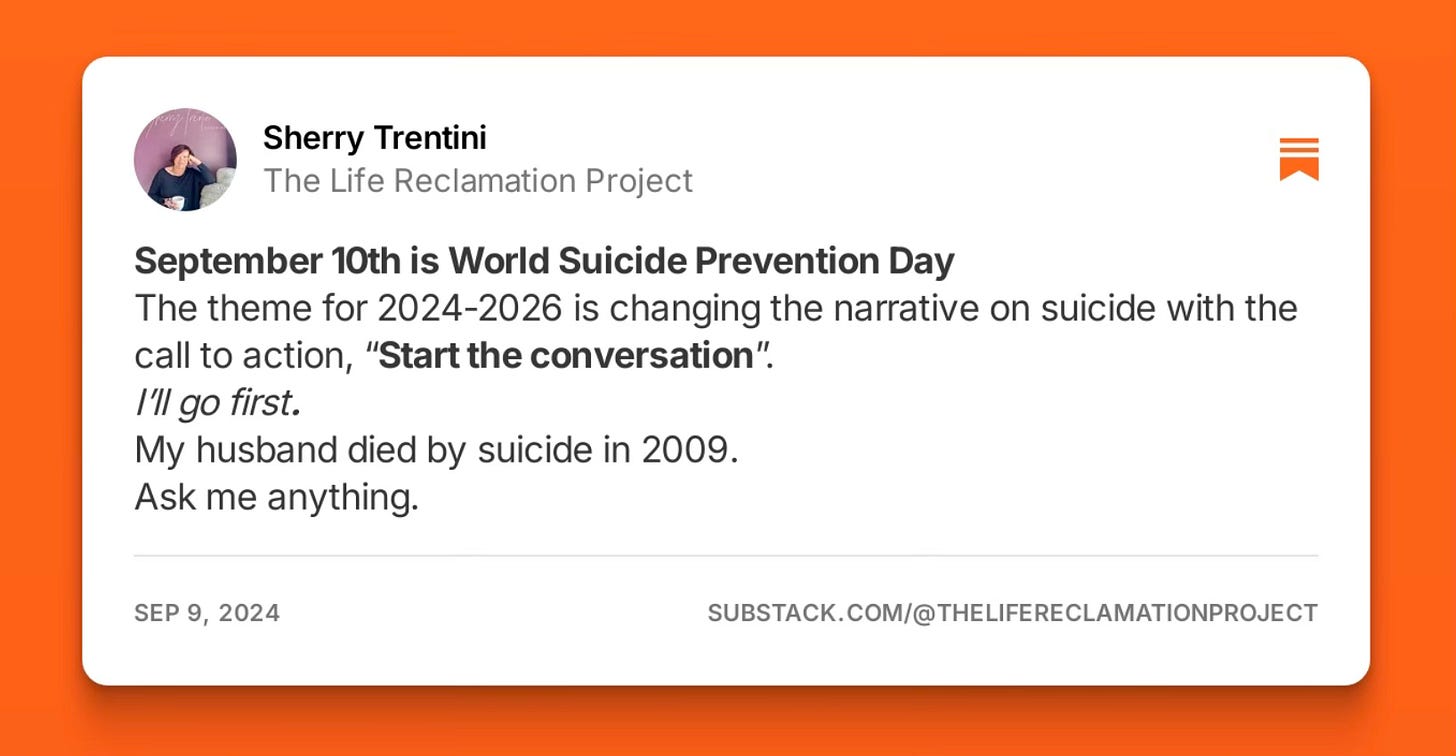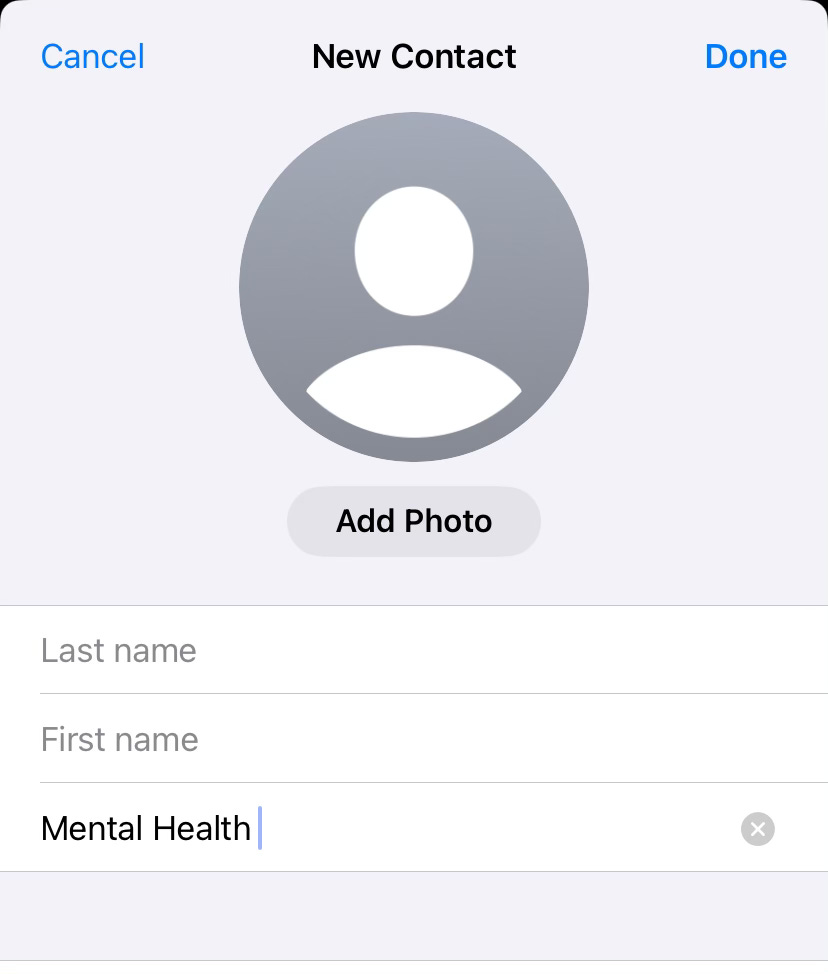The triennial theme for World Suicide Prevention Day for 2024-2026 is "Changing the Narrative on Suicide" with the call to action "Start the Conversation". This theme aims to raise awareness about the importance of reducing stigma and encouraging open conversations to prevent suicides. Changing the narrative on suicide is about transforming how we perceive this complex issue and shifting from a culture of silence and stigma to one of openness, understanding, and support. ~ WHO.int
The statistics are jarring about suicide. I’m choosing not to repost them, because I know all too well the ripple effect someone dying by suicide has. And the numbers aren’t getting any better, year after year.
But something that has gotten better is the language we use when we talk about it.
Frankly, the language around suicide evolved a few years ago and as with any change it takes a while for it to become familiar. Because what was common in our vernacular, even 5 years ago, can be stigmatizing.
I wasn’t bothered by what people said to me or about my husband’s death fifteen years ago.
Why? Because simply, it was what you said—then.
Today, if I heard those same things, I wouldn’t stand and nod. I would tell them compassionately that things had changed and would offer alternatives.
And honestly, I don’t wish for anyone to have to use this language, but the odds are you will. Here is a link to a resource to do just that.
https://988.ca/understanding-suicide/suicide-safe-language
You may also be interested in
How Else You Can Help Someone
Ask
Maybe you have had the occasion when you are talking to someone, that some of their language sounds and or feels unsafe.
When your spidey senses go off and you feel that what they are saying isn’t just for dramatic effect in story telling. Or you hear a theme in what words or actions they are describing.
Take a deep breath in, (if you need to), then ask them directly, “Are you thinking about suicide?”
You may be thinking that you couldn’t do that.
I believe that you can.
If you are completely off course, you can apologize.
But what if you are on the right course? What if they have been circling around trying to figure out how to tell someone, and you have heard them.
That.
That is what is important!!
Here is another resource: Talk to Someone You Are Worried About.
Believe Them
I know you don’t want to. But believe them anyway.
They have confirmed that they are thinking about suicide.
And yes, it may be out of character.
And yes, maybe you see this as just a rough spot.
And yes, it can feel like a lot of responsibility to have this information.
Take another deep breath.
Believe them…Even if you don’t want to.
They don’t need you to fix them, they need you to believe them, listen to them and be with them.
Create a New Contact(s)
Are you reading this on your smartphone right now? Great, so since you are already on your phone I invite you to create a new contact(s), to have resources readily available.
In an emergency call 911, or whatever your emergency number is where you live.
988 is the Suicide Crisis Line; which is only available in Canada and the USA.
Create a new contact(s) in your phone: Mental Health
So spend some time and learn what resources are available where you live. There may be non emergent crisis numbers available locally or nationally, that you can get support while supporting someone, or hand the phone to the person you are talking to right now.
Maybe you have multiple options. So make multiple contacts under the umbrella of Mental Health.
The few minutes you invest now will go a long way, rather than interrupting the flow of a conversation with someone needing help to have to search up who to call for support.
Resources:
There are other ways to learn more. Look for these classes online or near you.
Mental Health First Aid
Psychological First Aid
Suicide Prevention Training
Suicide Awareness Training
Suicide Intervention
Thank you for reading.
Sherry








Excellent guidance, Sherry.